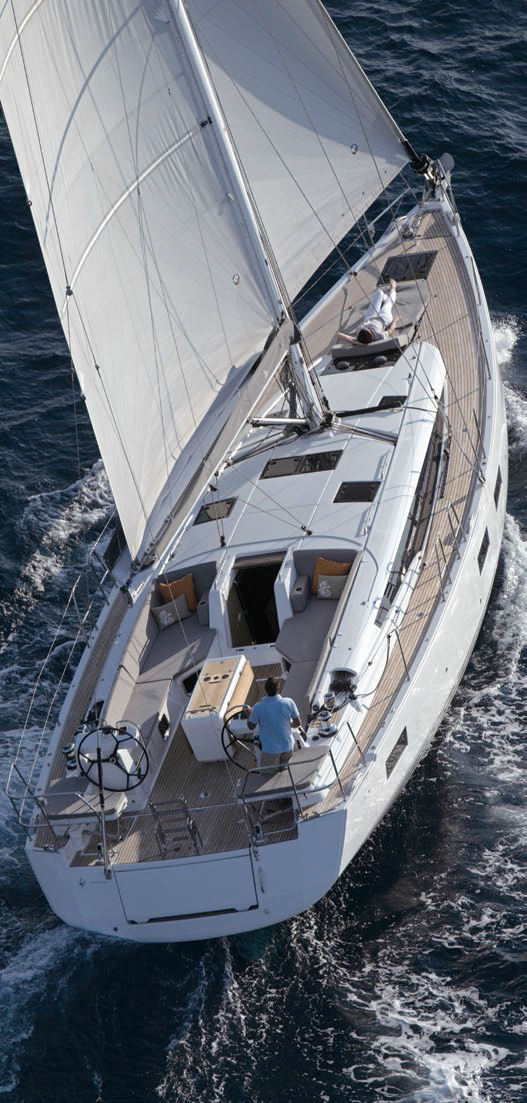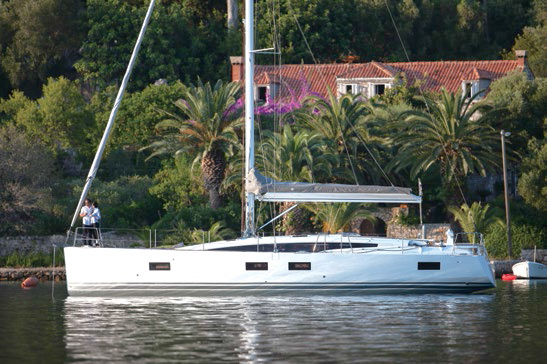The Jeanneau 54 is spacious, easy to handle and the cabins can be configured for family cruising or chartering.


The Jeanneau 54 is spacious, easy to handle and the cabins can be configured for family cruising or chartering.
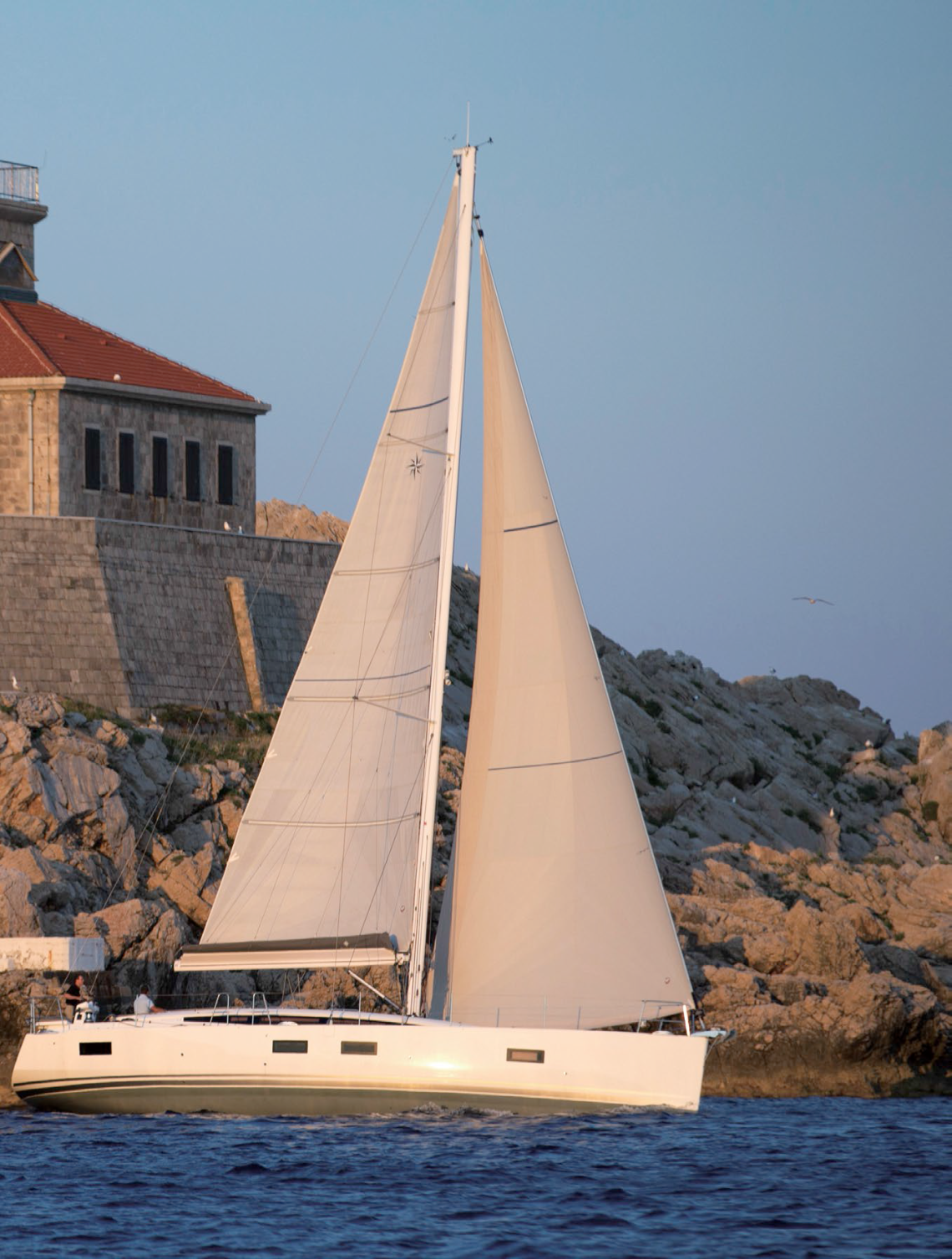

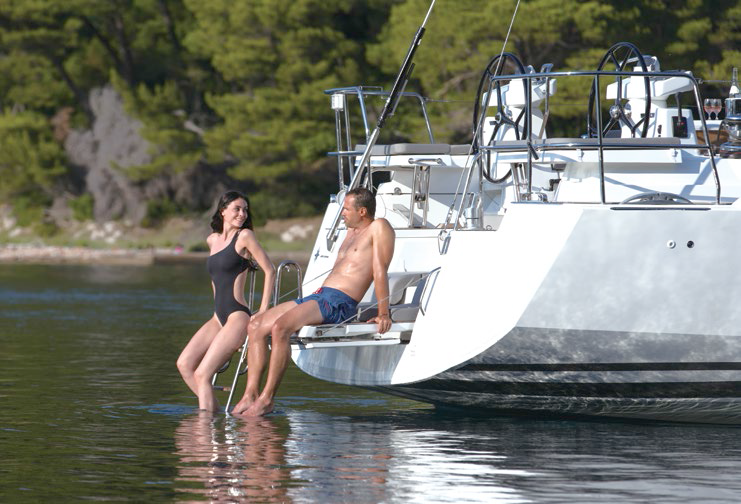
THE JEANNEAU 54 has a determined personality, but with different facets. It reveals itself as a family cruising sailboat with all the necessary features – comfort, easy manoeuvrability, great autonomy. However, its size is a little bigger than a normal family cruiser and its spaces, finishings and furniture – and even price – help it approach the luxury yacht category.
Designed by Philippe Briand, the model was introduced recently at Cannes during Jeanneau’s presentation of its latest creations. The boat tested was equipped with a rollable genoa, an autoturning flying staysail and an electronic system that allows simple manoeuvres to be done with just a few people or a Skipper accompanied by an inexperienced crew.
Looking at the deck layout, it clear that the design has made a perfect separation between manoeuvring spaces and free surfaces for relaxation so that the two activities can be done simultaneously. The cockpit is very wide, surrounded by two deep large seats and conceived to provide the helmsman with everything needed without disturbing the passengers.
At the end of the poop deck, a dashboard has been conceived to create an exclusive space at the sea level, with two lateral sunbeds and a platform equipped with a stepladder to reach the bathroom. During navigation, the closed transom makes everything disappear through a high-tech system.
In the middle of the cockpit, a big table with closable sides includes a raft that can be dragged to the water – without raising it – by bringing it to the transom where the helm seat can be raised.
The interiors are very cosy and comfortable, with the option of having up to five cabins as well as different layouts, furniture, wood and fabrics. The boat tested in Cannes had a big fore cabin and two double ones astern – one with twin beds, the other one with a double bed. Each cabin had its own bathroom. The shipbuilder proposes a version with only two cabins, one on the bow with the other at the stern, with a wide open space.
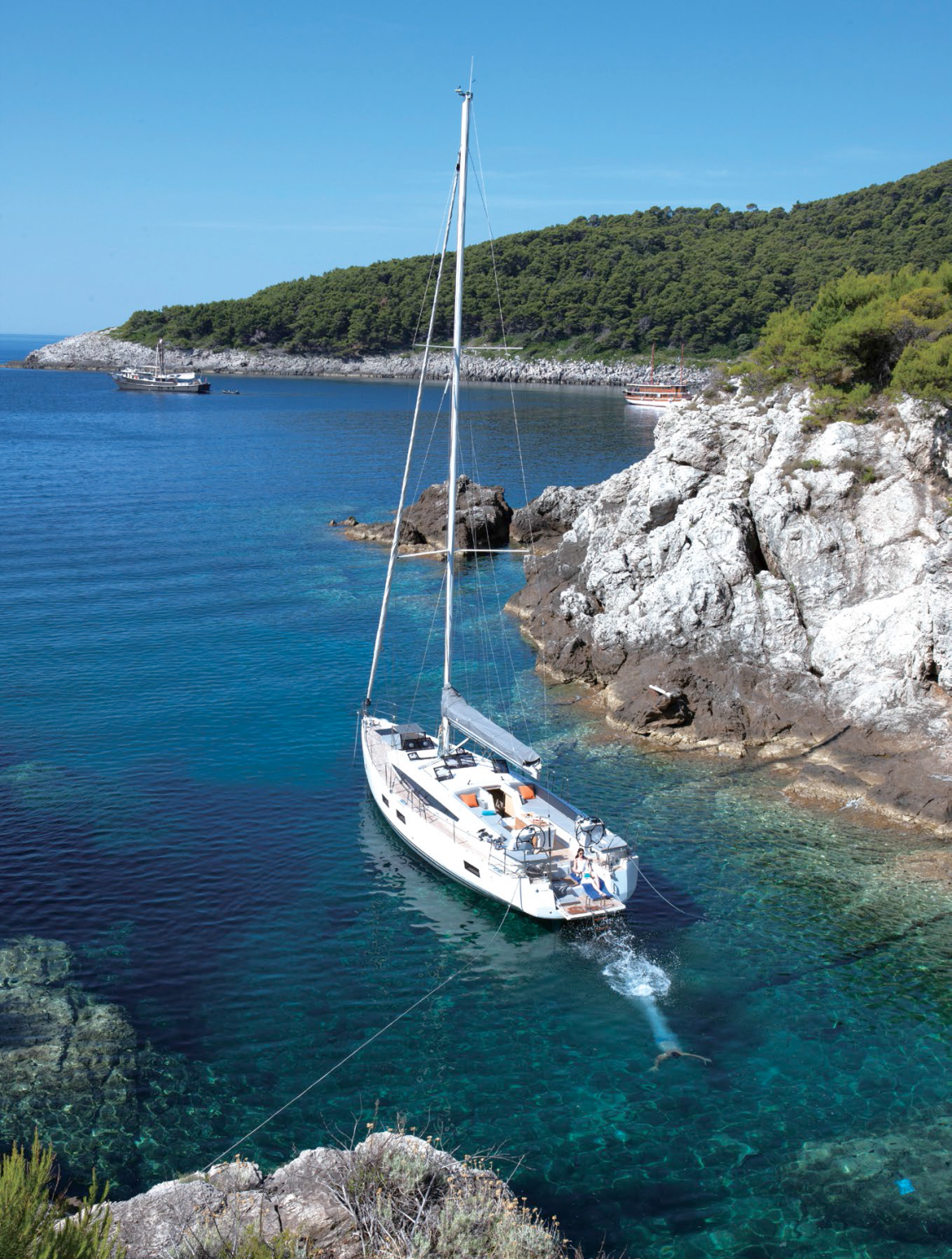


In all versions, except for the one with only two cabins, the kitchen is located along the port side, with a beautiful working board separated from the lunch zone by a corridor between the central sofa’s seatback and the kitchen. There are large stowage spaces under the dinette table.
The version with three cabins with en suites is an ideal solution for six to eight people, thanks to the large rooms and stowage spaces. The version with five cabins, on the other hand, is conceived for the charter market where efficiency is combined with good comfort for short periods.
The boat’s topside is made of a vacuum-seal laminated balsa sandwich and a monolite hull. The counter-mould is glued and laminated to the hull for greater stability. The deck is created through a particular injection process conceived by Jeanneau called the Prisma Process, which allows an excellent homogeneous distribution of resin without exaggerations. This way the deck is strong, but light – its weight is within 17 tonnes.
The boat was tested in light winds, between 8-10 knots, with a 110% overlapping genoa. It registered a speed of 6kts with a wind angle of 48 degrees. With a wind angle of 34 degrees, the lost speed was very low, about 5kts. When the wind decreased to 6kts, the Code 0 was raised and the boat sailed at about 4kts. The Yanmar 75hp engine gave a speed of 7.6kts at 2,500rpm and 8.7kts at 3,200rpm. As an alternative, there is a 110hp engine available.
www.jeanneau.com
www.leemarine.com
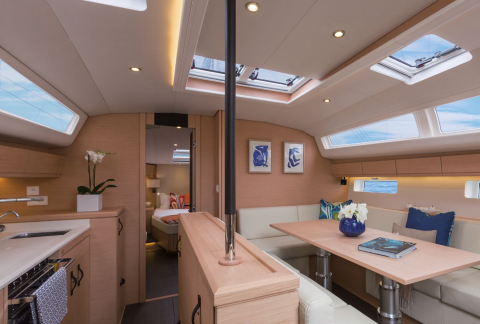

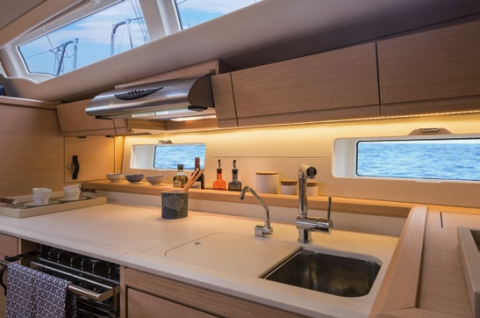

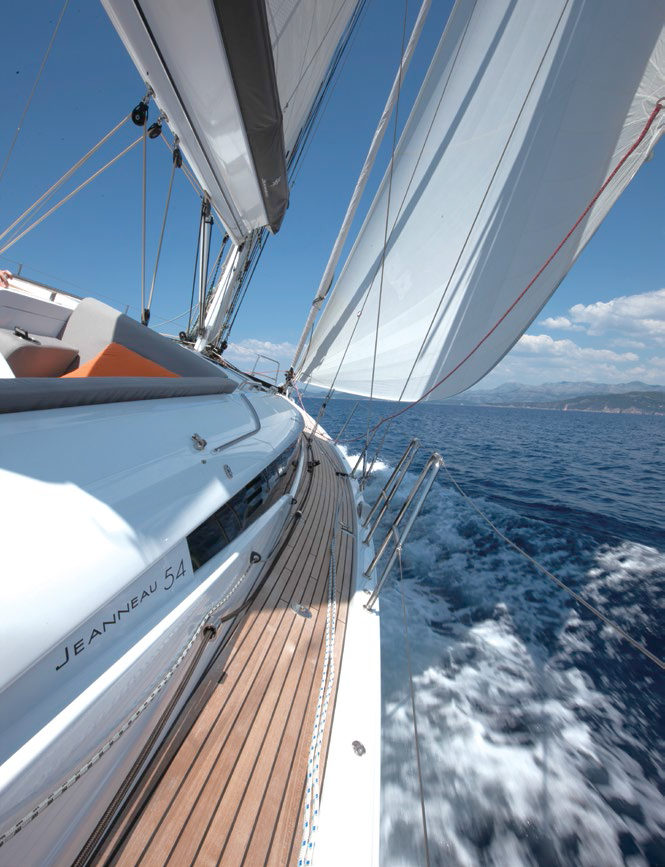
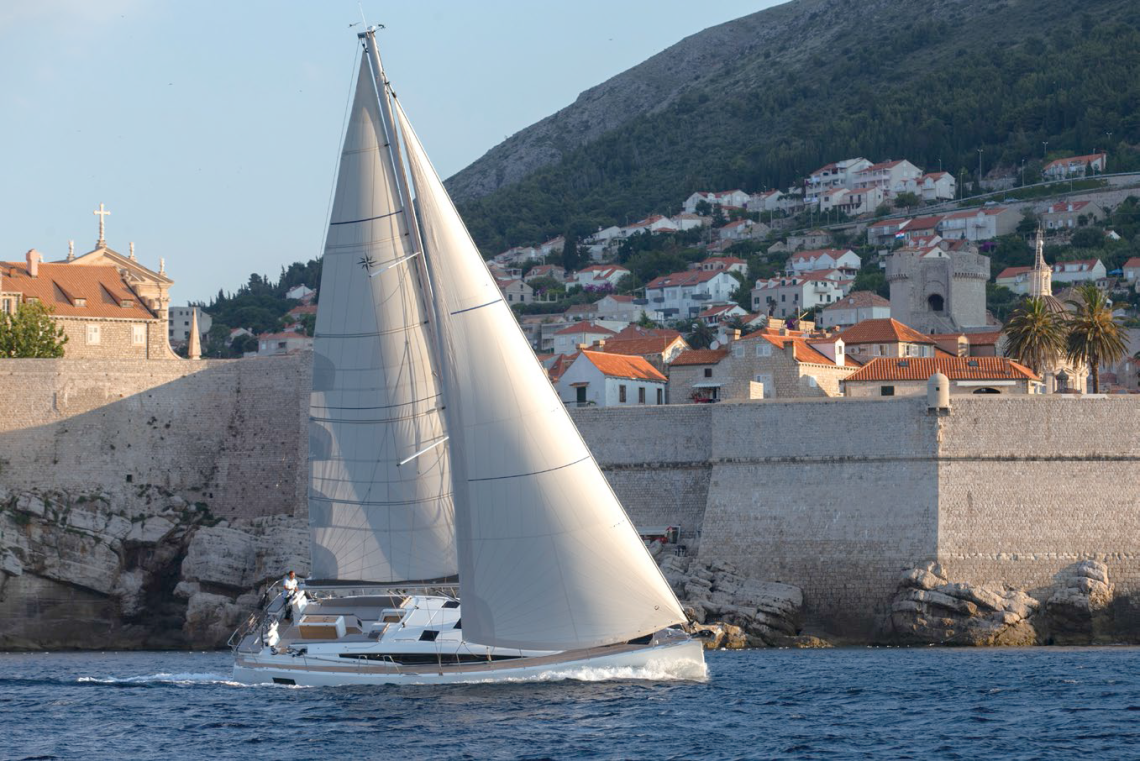
ASSISTED SAIL TRIM IS QUITE INNOVATIVE
During Jeanneau’s annual press meeting in Cannes, there was a great curiosity about the launch of the new models, but a lot of attention was given to something smaller and quite innovative. Assisted Sail Trim (AST) was developed by Harken in collaboration with Jeanneau.
This sailing assistance device trims the boat automatically, according to wind direction or course heading. So after the autopilot, here is an auto-tailer.
Before answering whether it works, it’s important to understand the basic principles. Developed with Harken over a two-year period of preparation and tests aboard a Sun Odyssey 519 (12m), AST must be developed on each single boat by considering its sailing area, the length of sheets and straightening.
It is physically similar to a plotter that must be placed on the rudder column. Its display shows the device status, settings and operations. Buttons are traditional and laterally placed.
AST must be used with Harken Rewind winches, launched a few years ago to assist hauling and easing. Even before activating the automatic setting system, AST is useful because it allows for the control of three winches and all sheets: an “operative control unit” from which the helmsman can ease or haul the mainsail and genoa easily and without abandoning his post.
AST must work in collaboration with the on-board equipment, in this case it was Raymarine, but it can be used with other brands through the NMEA 2000 connection.
Once the automatic setting function is activated, route decided and sails set, the winches acquire the sheets and electric engines move independently or according to route or wind variations. The system is not able to indicate the initial correct setting, and this task requires the Captain.
We tested AST in extreme conditions, with a very rough sea and about 30/35 knots of wind – much more than the normal range considered by Harken (5-25 knots). Despite this, the system performed quite well. In these conditions, the limit is represented by instability: continuous gusts, swerving and route variations.
Also with wet sheets, the winch grip is different from the normal one.
It’s important to say that, as Harken specifies, AST in not a form of independent driving. The crew must be present and active, especially since it’s a regulation. You cannot entrust the boat to it.
However, we can say that AST makes sense and has a future. It finds its ideal declination when it works with the automatic pilot on medium-sized boats (it’s not by chance that the next Jeanneau boat will be between 54ft and 64ft), maybe with an auto-turning jib, for transfers and long navigations.

